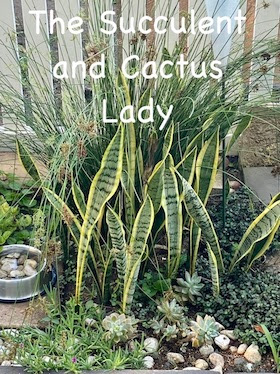Nature and her bounty is a wonderful thing. My garden, and the succulents in particular, have benefited greatly from all the rain we've been having. The Echverias (E. imbricata) absolutely love all the water (provided there is good drainage) and they have turned into saucer-sized (a big one!) beauties!
However, as bountiful as she gives, she can also take. We've been having extreme hail storms over the past couple of months and although most of my succulents suffered no damage at all and really seemed to thrive afterwards, the tender (huge!) Echeverias bore the brunt of all that pummelling. Some of the hail stones were as big as golf balls.
Hail damage to my Echeverias (E. imbricata)
Shortly after all the hail, just about all the succulents started flowering profusely, making for a wonderful display.
Echinopsis cactus flowers
Epiphyllum crenatum (Litroos)
Mammilleria Cactus Flowers
Rattail cactus flowering
Peanut cactus
It always amazes me that, no matter how much I water the garden, even after just a few millimeters of rain, everything is lush and green. And it's actually no surprise - Rainwater contains nitrate – the most bio-available form of nitrogen.
Nitrogen is one of the three key macro-nutrients that plants need to
thrive – necessary for the development of lush foliage. Rainwater is 100% soft water. Free of the salts,
minerals, treatment chemicals, and pharmaceuticals that are found in
municipal water, groundwater, and surface water, rainwater is pure
hydration.
Rainwater is slightly acidic—naturally! Green gardeners
know that most organically grown plants prefer soil pH levels between
5.5 and 6.5. This is on the acidic side of the neutral pH 7, and by
nature’s design, it is the exact pH range for rainwater. Tap water, on
the other hand, is treated to be alkaline to protect metal pipes from
corroding, and can have a pH level upwards of 8.5.
So there you have it - if you want your succulents to thrive, try and gather rain water in barrels and use that to water your potted succulents. Stored rainwater contains some organic matter. If collected from your rooftop, rainwater contains traces of organic material, like leaf litter, pollen, bird droppings and the like, which are great for your plants.












